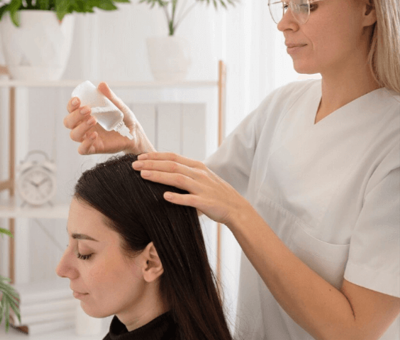Melasma is a notoriously persistent skin condition that causes dark, blotchy patches—often on the face. While over-the-counter products may offer minimal relief, medical treatment is typically required to significantly reduce or manage melasma, especially for long-term results. In Korea, dermatology clinics are at the forefront of melasma therapy, offering cutting-edge solutions tailored for Asian and ethnic skin types.
This guide explains what patients—especially international ones—need to know about melasma treatments available in Korea, including procedures, medications, and clinic protocols.
🔬 Why Seek Medical Treatment for Melasma?
Melasma is caused by melanin overproduction triggered by UV light, hormones, heat, and inflammation. It is not easily cured by cosmetics or whitening creams. Medical treatment addresses:
- Pigment in both superficial (epidermal) and deep (dermal) layers
- Inflammation and vascular triggers
- Hormonal components
- Prevention of recurrence
Korean dermatologists focus on multi-layered treatment plans, aiming to suppress melanin production, calm the skin, and gradually fade pigmentation with low-risk, high-efficacy protocols.
🏥 What Makes Korean Melasma Treatment Different?
| Feature | Korean Approach |
|---|---|
| Laser Technology | Gentle, high-frequency devices suitable for sensitive or darker skin |
| Tailored Protocols | Customized by melasma type (epidermal, dermal, vascular) |
| Focus on Prevention | Long-term care plans to reduce recurrence |
| Medical-Grade Products | Topical prescriptions with regulated ingredients |
| Minimal Downtime Options | Ideal for locals and medical tourists |
🔍 Step-by-Step: Medical Treatments Offered in Korean Clinics
1. Laser Toning (Q-Switched Nd:YAG or Pico Lasers)
One of the most effective tools in Korean dermatology. These lasers emit light energy to break down melanin particles without damaging surrounding skin.
Devices commonly used:
- Spectra XT
- PicoSure
- PicoPlus
- Pastelle
How it works:
- Low-fluence (gentle) sessions repeated every 1–2 weeks
- Gradually reduces pigmentation
- Safe for Fitzpatrick skin types III–V
Pros:
- Minimal pain or downtime
- Good for mixed and dermal melasma
- Often combined with other treatments
2. Oral Tranexamic Acid (TXA)
A widely used systemic medication in Korea to suppress melanin activation by blocking the plasminogen pathway.
Protocol:
- Low-dose tablets (250–500 mg/day)
- Taken for 8–12 weeks or longer under supervision
Often combined with:
- Laser toning
- Brightening serums or topical TXA
Caution: Not recommended for patients with history of clotting disorders. Always prescribed after screening.
3. Mesotherapy / Skin Boosters for Pigment Control
Minimally invasive microinjections deliver active ingredients like:
- Tranexamic acid
- Vitamin C
- Niacinamide
- Glutathione
Benefits:
- Targets melanin formation directly at the skin level
- Hydrates and calms the skin barrier
- Safe for post-laser use or during hot weather
Popular for: Short-stay visitors and those with sensitive skin
4. Chemical Peels (Brightening Peels)
Used with caution on melasma patients, especially those with epidermal pigmentation.
Common peels:
- Mandelic acid
- Lactic acid
- Azelaic acid
Purpose:
- Gently exfoliate dead skin
- Enhance penetration of actives
- Brighten dull complexion
Caution: Peels are avoided in cases of dermal melasma or reactive skin. Dermatologists will assess suitability.
5. Topical Prescription Creams
Korean dermatologists may prescribe regulated topical agents such as:
- Hydroquinone (short-term use)
- Tretinoin (retinoids)
- Topical TXA
- Azelaic acid
- Cysteamine cream
- Niacinamide-containing formulations
Often dispensed directly by the clinic with detailed instructions to prevent irritation.
6. Combination Therapy (The Gold Standard)
Most clinics in Korea use a multi-modal approach—the key to long-term success with melasma.
| Treatment Combo | Effect |
|---|---|
| Laser + TXA + Mesotherapy | Faster clearance, fewer relapses |
| Topical + Oral TXA | Suppresses recurrence |
| Lasers + Peels (carefully timed) | Smooth texture and brighten |
This integrative strategy targets melanin production, dispersion, inflammation, and skin renewal simultaneously.
💡 What to Expect During Treatment
| Phase | Timeline | Notes |
|---|---|---|
| Initial consultation | 30–60 min | Diagnosis using VISIA scan, Wood’s lamp, history review |
| Treatment sessions | 2–5 sessions over 1–2 weeks (for tourists) | Lasers + adjunct therapies |
| Home care guidance | Aftercare kits often included | Sunscreen, brightening serums, mild cleansers |
| Follow-up | Optional remote consults | Especially useful for foreign patients |
🧴 Supporting Care: What Korean Clinics Recommend
Daily Skincare:
- SPF 50+/PA++++ sunscreen (tinted or iron oxide preferred)
- Gentle cleansers and fragrance-free moisturizers
- Barrier-repair creams with ceramides and panthenol
Lifestyle Tips:
- Avoid excessive heat (saunas, spicy food)
- Wear a wide-brim hat and UPF scarf outdoors
- Minimize makeup immediately after treatment
📍 Recommended Korean Clinics for Melasma Treatment
| Clinic | Location | Specialty | Language Support |
|---|---|---|---|
| Banobagi Dermatology | Seoul (Gangnam) | Laser & mesotherapy combo | English, Chinese |
| Oracle Skin Clinic | Seoul, Busan, Jeju | TXA-based protocols, tourist-friendly | English, Japanese |
| MUSE Clinic | Seoul (Gangnam) | Budget-friendly, effective toning plans | English, Thai |
| THE ME Clinic | Myeongdong | Skin boosters, walk-in service | English, Chinese |
| Regen Dermatology | Seoul | Advanced lasers (PicoPlus, Spectra XT) | Multilingual |
💬 Final Thoughts
Melasma may be difficult to treat, but Korean dermatology clinics offer some of the most advanced, evidence-based therapies available globally. Whether you’re a local patient or a medical tourist, Korea’s customized combination treatments—including laser toning, tranexamic acid, mesotherapy, and prescription skincare—provide measurable, long-term results with minimal risk.
If you’re considering melasma treatment, booking a consultation at a reputable Korean clinic could be the first step toward clearer, more even-toned skin.




